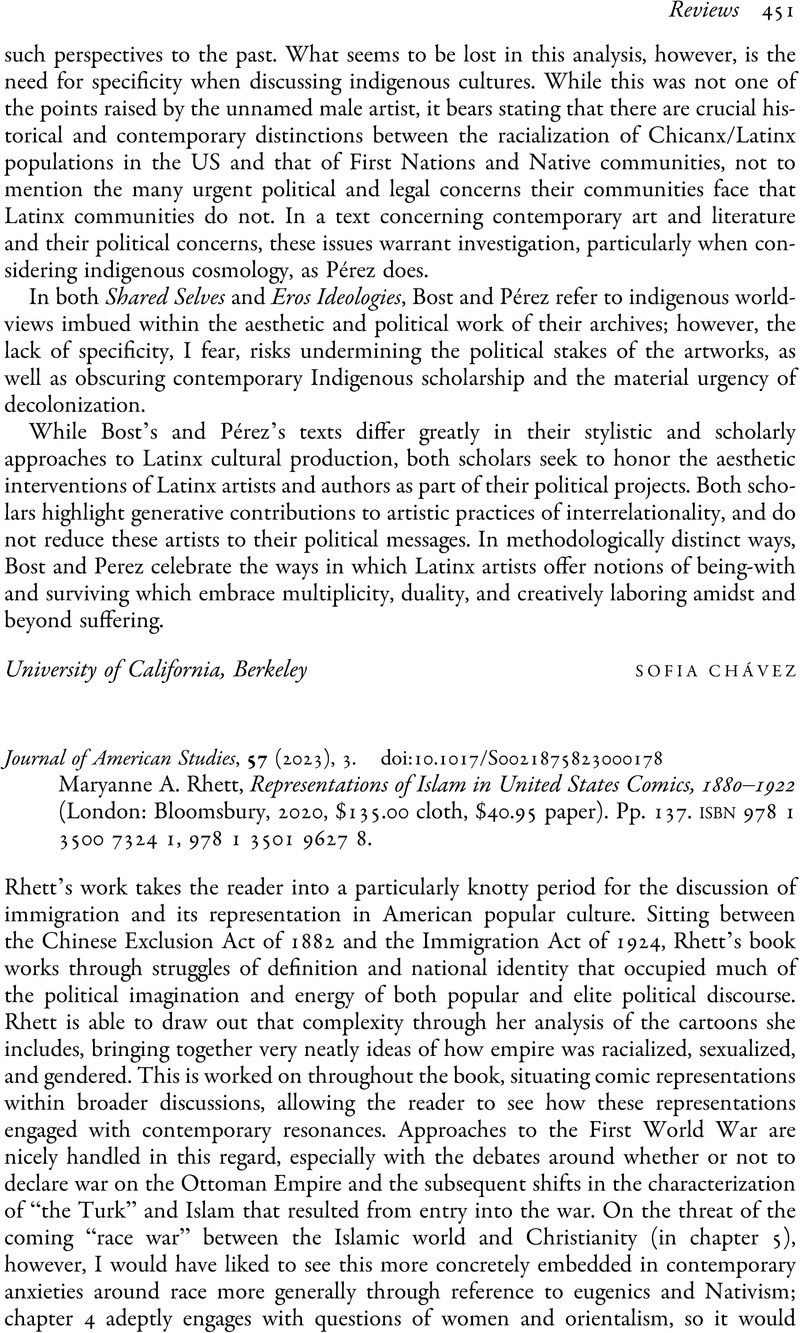No CrossRef data available.
Article contents
Maryanne A. Rhett, Representations of Islam in United States Comics, 1880–1922 (London: Bloomsbury, 2020, $135.00 cloth, $40.95 paper). Pp. 137. isbn 978 1 3500 7324 1, 978 1 3501 9627 8.
Review products
Published online by Cambridge University Press: 04 August 2023
Abstract

- Type
- Review
- Information
- Copyright
- Copyright © The Author(s), 2023. Published by Cambridge University Press in association with the British Association for American Studies
References
1 Hoganson, Kristin, Fighting for American Manhood: How Gender Politics Provoked the Spanish–American and Philippine–American Wars (New Haven, CT: Yale University Press, 1998)Google Scholar, would have been a helpful reference – it is absent from the bibliography.
2 Kramer, Paul A., The Blood of Government: Race, Empire, the United States, and the Philippines (Chapel Hill: University of North Carolina Press, 2006)Google Scholar; Perez, Louis A. Jr., “Incurring a Debt of Gratitude: 1898 and the Moral Sources of United States Hegemony in Cuba,” American Historical Review, 104, 2 (1999), 356–98CrossRefGoogle Scholar; Ngai, Mae M., “The Architecture of Race in American Immigration Law: A Reexamination of the Immigration Act of 1924,” Journal of American History, 86, 1 (1999), 67–92CrossRefGoogle Scholar.
3 Venn, Fiona, “The Wartime ‘Special Relationship’? From Oil War to Anglo-American Oil Agreement, 1939–1945,” Journal of Transatlantic Studies, 10, 2 (2012), 119–33CrossRefGoogle Scholar.
4 The construction of ideologies of race and ethnicity in this period is outlined in Omi, Michael and Winant, Howard, Racial Formation in the United States, 3rd edn (Abingdon: Routledge, 2015)Google Scholar.
5 There is no consideration of Islam, or of emigration from predominantly Muslim countries, in works such as Handlin, Oscar, The Uprooted, 2nd edn (Boston, MA: Little, Brown & Co., 1973)Google Scholar; Bodnar, John, The Transplanted: A History of Immigrants in Urban America (Bloomington: Indiana University Press, 1985)Google Scholar; while Jones, Maldwyn Allen, American Immigration (Chicago: The University of Chicago Press, 1960)Google Scholar, has just one mention of Turkish emigrants (at 179).
6 See, for instance, Gowing, Peter G., “Muslim–American Relations in the Philippines, 1899–1920,” in Kratoska, Paul (ed.), South East Asia Colonial History, Volume II (London: Routledge, 2004), 372–82Google Scholar; and, as already mentioned, Kramer, The Blood of Government.



